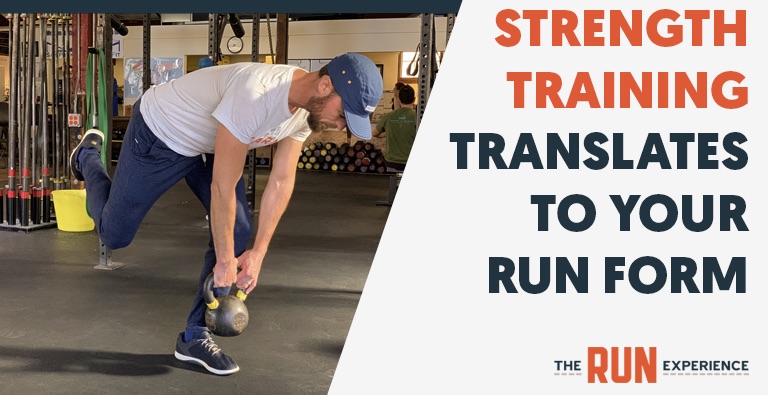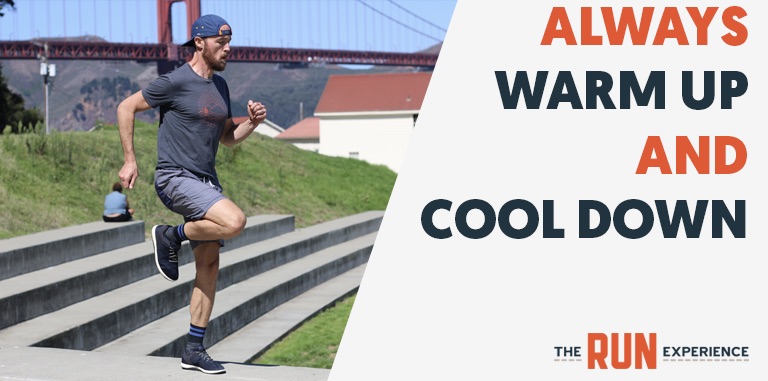How to Improve Running Cadence (Tips, Drills & Benefits)
Learn how to improve running cadence with expert tips, drills, and how-tos. Increasing your cadence prevents injuries and boosts performance.

Looking to improve your running cadence? Whether you're a distance runner or you just go for a mile or two, and whether you’re a competitive athlete or just a recreational runner, your cadence matters.
Running is not just a matter of putting one foot in front of the other. It's an intricate dance where rhythm, pace, and technique merge to create efficient movement. Among the critical elements of this dance is the concept of running cadence.
Often overlooked by beginners and even some seasoned runners, cadence is the tempo of your stride—the number of steps you take per minute. Just as a musician fine-tunes an instrument to get the best sound, adjusting and optimizing your running cadence can yield remarkable benefits in performance and injury prevention.
Below, we'll walk you through everything you need to know to increase (or improve) your running cadence. We'll cover actionable tips and drills to master your running cadence, avoid injury, and boost performance.
What Is Cadence in Running?
Simply put, running cadence is just your step rate—the number of times your feet hit the ground in a given time interval.
What Is SPM in Running: Cadence in running is typically measured in steps per minute (SPM). Average recreational runners typically have a cadence of around 150-170, while elite athletes can be anywhere from 180-200.
Where should your running cadence be?
Well, it depends. First, your height will play a big part in how fast you can turn your feet over. A shorter runner might not have a hard time turning their feet over quickly, but an athlete with long legs will find it difficult to maintain a cadence of 180 or more.
Running at a faster cadence will help improve your running. It’s as simple as that. In this article, we’re going to dive into why cadence is important, and then focus on how to improve your step rate to achieve optimal cadence.
How to Measure Your Running Cadence
Modern technology has made it easier than ever to measure and track your running cadence. Here are some tools and methods to help you keep tabs on your steps per minute (SPM):
Running Apps:
- Strava: Strava not only tracks your runs but also provides detailed cadence data. Simply start your run, and the app will automatically calculate your cadence based on the number of steps you take.
- Nike Run Club: This app tracks your cadence and offers guided runs and coaching tips to help improve your running efficiency.
- Runkeeper: Another popular app that tracks cadence and provides insights into your running metrics to help you improve.
- MapMyRun: Offers cadence tracking along with other running metrics and personalized training plans.
GPS Watches:
- Garmin: Many Garmin models, like the Forerunner series, come with built-in cadence sensors that provide real-time feedback and post-run analysis.
- Apple Watch: With the Workout app, you can track your cadence and other running metrics. Some third-party apps also offer enhanced tracking features.
- Polar: Polar watches provide cadence tracking and detailed running analytics, which can be reviewed after your workout.
- Suunto: Suunto watches track your cadence and offer insights to help you improve your running performance.
What's the Best Running Cadence?
The concept of an optimiza running cadence has been popularized by many experts and coaches, often centering around the benchmark of 180 steps per minute (spm). This figure was notably observed by coach Jack Daniels during the 1984 Olympics, where he counted the strides of distance runners and found many elite athletes running close to this cadence.
However, it's essential to recognize that while 180 spm is a good reference point, the best running cadence can vary based on individual factors. Here's what you should consider when searching for the a good cadence for running:
- Individual Variation: Not every runner's biomechanics and physiology are the same. Factors such as leg length, flexibility, and running style can influence one's optimal cadence.
- Speed and Effort: Cadence tends to increase with speed. Therefore, your stride rate during a leisurely jog will likely differ from that during a 5K race. It's natural for cadence to fluctuate based on the intensity and type of run.
- Terrain: Uphills, downhills, and technical trails can affect stride rate. On uphills, for instance, many runners naturally increase their cadence and decrease their stride length.
- Benefits of Higher Cadence: Increasing cadence (without increasing speed) tends to decrease stride length, which can reduce impact forces on the joints and decrease injury risk. A quicker cadence can also improve running economy for some individuals by promoting a midfoot or forefoot strike, thereby enhancing the body's natural shock-absorbing capabilities.
- Finding Your Cadence: If you're curious about your average cadence, many running watches and apps can provide this data. Once you have your baseline, you can experiment with adjusting it to see how it feels and if it positively affects your running mechanics and efficiency.
- Gradual Changes: If you decide to adjust your cadence, do so gradually. A sudden change can lead to new stresses and potential for injury. For example, if your usual cadence is 160 spm, try increasing it to 165 spm before eventually aiming for higher rates.
While the 180 spm benchmark is a useful reference, it's not a one-size-fits-all number. It's more valuable to be aware of your cadence, understand how it affects your running, and make informed decisions on any adjustments based on personal experience and feedback.
Cadence Goals for Different Types of Runners
Recommend Cadence for Beginners
For beginner runners, the focus should be on building a solid foundation rather than hitting an exact number of steps per minute (SPM). However, aiming for a cadence of around 160-170 SPM can be a good starting point. This range helps reduce the impact on joints and encourages a more efficient running form. Beginners should gradually work up to this cadence to avoid injury and build endurance.
Tips for Beginners:
- Start by counting your current cadence and make small adjustments.
- Incorporate cadence drills, such as high knees or butt kicks, into your warm-ups.
- Use a metronome app to maintain a consistent rhythm.
Recommended Cadence for Intermediate and Advanced Runners
Intermediate runners who have built a strong base and are looking to improve performance can aim for a cadence of around 170-180 SPM. This range is associated with improved running efficiency and reduced injury risk.
Advanced runners, including elite athletes, often maintain a cadence of 180-200 SPM, especially during races and high-intensity workouts. This higher cadence helps maximize efficiency and speed.
Tips for Intermediate and Advanced Runners:
- Regularly monitor and adjust your cadence using running apps or GPS watches.
- Focus on maintaining a higher cadence during speed workouts and races.
- Practice cadence drills and include them in your weekly training routine.
Why Is Running Cadence Important?
If improving your running cadence is low on your list of priorities, that’s probably because you don’t understand how important running at a higher cadence is. So let’s start there.
Ultimately, your running cadence illustrates how “heavy” your steps are. From a biomechanics perspective, the slower your cadence, the more work you’re asking your body to do with each step. Think about it. If you’re on the ground for longer in between steps, you are requiring your body to shock absorb a lot more than if you were running at a higher cadence.
The quicker your stride rate, the “lighter” your stride. By reducing your ground contact time, you are minimizing the amount of work your body needs to do for each foot strike, thereby reducing your risk of running injuries over time.
Also, note that working on your cadence does not negate the importance of strength training. In fact, your strength training will largely contribute to proper run form, which makes improving your cadence that much easier.

Does a Quicker Cadence Mean I Have to Run Faster?
Absolutely not. Your run speed is a combination of stride length and the number of steps you take in a minute, or whatever given time interval you prefer to measure with.
So, to improve your cadence, avoid overstriding. A longer stride is not our focus here; we’re aiming only for a higher cadence.
What this means is that in order to improve your cadence, you just need to shorten your stride length. We can do that with a simple pulling drill.
The Best Cadence Drills for Runners
Pulling Drill to Improve Your Cadence
Running drills are usually a solid way to work on a particular goal, and cadence-based goals are no exception.
In fact, this pulling drill will help you with two things. First, it’s going to make your running more efficient. This means you will need less energy to run more correctly. Who wouldn’t want that?! And second, it is going to shorten your stride length by default.
To do this, you want to find the halfway point between a high knee and a butt kick. Once you’ve nailed down this motion, practice 20 pulls on the right, 20 pulls on the left, and then 20 pulls alternating.
While you certainly don’t need a running coach to do this drill, I’ve included a video below to fully demonstrate this drill.
This drill will naturally require improved running form and running technique. It requires your hips to face straight forward, which engages your glutes and hamstrings. And as a result of this improved running form, you will be able to bounce off of the ground more easily, and take more steps per minute (SPM).
And you can incorporate this drill in your warm up, your cool down, or even during your run as a sort of reset.

And if it’s not part of your warm up or cool down, be sure you don’t skip them! The cadence work and injury prevention will only be effective if you are properly taking care of your body.
How to Work a Faster Cadence Into Your Runs
Let’s be clear: not every run needs to be fully focused on your running cadence. Trust me, I’ve tried that. Thinking about my cadence became all-consuming and it not only took the joy out of running for me, but it also didn’t work.
Instead, once you get going on a run, count how many steps you take in one minute. This can be the first minute of your run after you’ve done your warm up, or a different minute also near the beginning of your run. Take a note of how many steps you took in that minute.
Measure Your Cadence Every 7-10 Minutes
Then, every 7-10 minutes on your run, try to match how many steps you took in that original timed minute. I like to use a metronome app on my phone to help keep my SPM on track, that way all I have to do is follow the metronome to be sure I’m sticking with that original cadence.
As a jumping off point, 160 SPM (80 per leg) is a good starting point for me, but there is no right or wrong here.
When trying to keep up with that metronome, utilize the pulling technique from the drill above.
From there, add 2 to your SPM every week. So, if you used 160 SPM as your metronome tempo one week, set it to 162 SPM the next week.
And this can be done on a treadmill or outdoors. If you’re on the treadmill, adjust your speed accordingly, but still use a metronome if you can.
And remember, this is only going on every 7-10 minutes of your run, for only one minute.
This way, your cadence is work is targeted and focused. Your overall goal, running at your ideal cadence, is essentially being broken down into much smaller, more manageable goals that will yield big results over time. These one-minute efforts are bite-sized.
Increase Your Running Cadence
There you have it! Hopefully you now understand why improving your running cadence is so important. I have actually found that my cadence work has greatly reduced the pain from a hip injury I’ve been dealing with!
Try out the pulling drill and the metronome cadence work, make it regular, and enjoy the improvements! Make your cadence a priority. It’ll impact everything from your recovery runs to race day.
